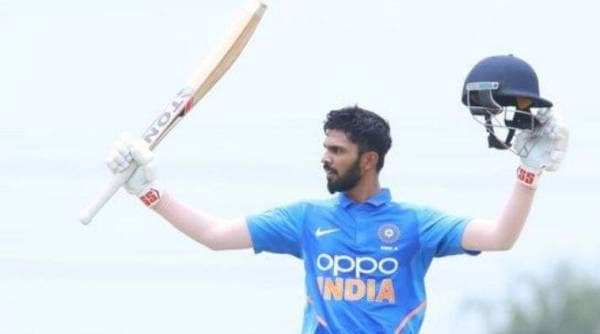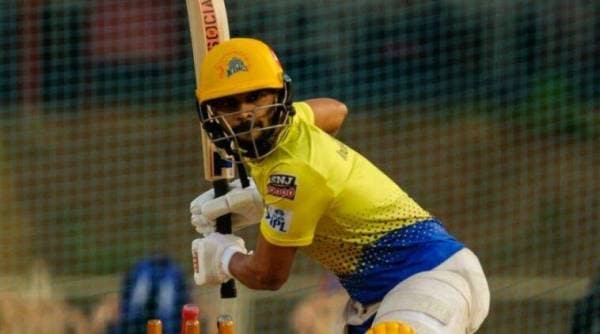When selectors named the Test squad for India’s tour of the Caribbean, eyebrows were raised over Sarfaraz Khan and Abhimanyu Easwaran’s omission, as much as for the call-up of Ruturaj Gaikwad.
The Gaikwad development is being viewed with great interest. Even Dilip Vengsarkar at whose academy Gaikwad blossomed, is in wait – and – watch mode. “He is definitely someone with a great potential, but you will only know when he plays,” Vengsarkar told the Express.
There is no doubting Gaikwad’s potential, for he has shown what he can do in the IPL. But Test cricket remains a big leap for some of those who have not been able to replicate white-ball success into red-ball cricket. From Michael Bevan to Yuvraj Singh, Suresh Raina to Jos Buttler, a lot of big names, who despite looking comfortable against high-quality pacers in limited-overs, have been found wanting when they are tested in probing spells in Tests.
With Gaikwad, the selectors have taken a leap of faith. To accommodate him in the team, they have overlooked Sarfaraz Khan, a batsman who averages 79.64 in first-class cricket. He has been picked ahead of Easwaran, who has delivered consistently in A tours and in Ranji Trophy, and scored four successive centuries in first-class cricket at the start of the year. And to bring in Gaikwad, selectors have also dropped a veteran like Cheteshwar Pujara, who has 102 Tests to his name.

Gaikwad ‘s selection is a big test of selectors’ belief that white ball success in IPL can be replicated in Tests based on the batsman’s temperament. The success of this philosophy holds implications beyond just Gaikwad’s selection.
In selection, it is not just about numbers always. Often, selectors punt on talents they reckon have potential to do well. It is how MS Dhoni came in despite being so unconventional. With Gaikwad, there is nothing unconventional about his batting, but in 28 first class matches, he hasn’t made a pressing case for his inclusion ahead of his peers. He averages only 42.19 in first-class cricket, which is not bad, but not great either. The reason why he finds himself in the Test team is the selectors, by watching his performances in the IPL, reckoned he can replicate his temperament of facing high-quality pacers in the long format and can withstand sustained pressure.
From using IPL to pick players for the T20 side, the selectors are also using it as a platform to find how the cream of domestic talent performs when they come up against overseas pacers. In the absence of A-tour programs, they have resorted to picking talents for Test teams on the basis of IPL. But it is a gamble they are happy to take, never mind the fact that they tried Suryakumar Yadav only for a Test against Australia before discarding him.
Since making his IPL debut in 2020, Gaikwad has shown he is a player for the future and has even won the Orange Cap in 2021 playing for Chennai Super Kings. But the challenge ahead of him is enormous as it could potentially decide the road the selectors take when it comes to future calls: A batsman, who shows good temperament against quality attacks in the IPL, jumps the queue ahead of those performing consistently in Ranji Trophy, Duleep Trophy and Irani Cup.
“Red ball or white-ball doesn’t matter. It is all the same,” former chairman of selection committee Dilip Vengsarkar told The Indian Express when asked if there is merit in the call-up. “A good player will adjust to all formats. The thing we have to wait to see is how he performs in Test cricket. And I don’t understand this queue. Every player is in contention,” Vengsarkar added.

While Gaikwad may not have had a head-turning season in Ranji Trophy to show, those who have worked with him from close quarters have always viewed him as a player who should be playing at the highest level on a regular basis. Before the last season of the IPL began, Chennai Super Kings batting coach Mike Hussey in an interaction revealed how he sees shades of himself in the way Gaikwad goes about his game by just sticking to the basics and doesn’t complicate much.
“The great thing about Ruturaj is he’s gaining a great understanding of his own game. He certainly has the skills. He certainly has the mental capability. He certainly has the understanding of his own game to have success at the next level. I have no doubt. If he can get that opportunity, he’ll show the world how good he is. I do love his game and the way he goes about it…he’s confident in the way he goes about it,” Hussey said.
Proactive batting
Moreover, it is also pertinent to know why despite having players like Hanuma Vihari, Sarfaraz, Easwaran – who all can occupy the crease for long and score big – the need to go for a player who is known to play his shots. In the limited-overs arena, even as teams around them went about changing their approach, India were in snooze mode for long, with a nap turning into a deep sleep. And the end result is, they are still playing catch-up cricket.
In that sense, the Test team has been an exception. The core of Virat Kohli, Cheteshwar Pujara, Ajinkya Rahane, R Ashwin, Ravindra Jadeja, Mohammed Shami, Rohit Sharma has been intact for a while now. They have made it to successive World Test Championship finals, and even though the title has eluded them, India has been a powerhouse in the formats, unlike the ODIs and T20s.
By design or default, the onset of Bazball and teams seeking result-oriented pitches means Test cricket is undergoing a massive change. From a side that has been heavily reliant on their bowling unit to take them forward and preferred a batting line-up that could hold fort like a rock in challenging conditions, India are now beginning to add another dimension, where they realise the need to have a more proactive batting line-up.
by Venkata Krishna B for indianexpress.com




